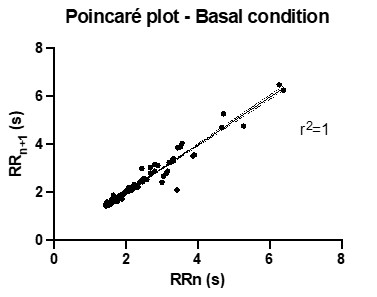Peer review process
Not revised: This Reviewed Preprint includes the authors’ original preprint (without revision), an eLife assessment, public reviews, and a provisional response from the authors.
Read more about eLife’s peer review process.Editors
- Reviewing EditorMilica RadisicUniversity of Toronto, Toronto, Canada
- Senior EditorOlujimi AjijolaUniversity of California, Los Angeles, Los Angeles, United States of America
Reviewer #1 (Public Review):
The manuscript, "A versatile high-throughput assay based on 3D ring-shaped cardiac tissues generated from human induced pluripotent stem cell-derived cardiomyocytes" developed a unique culture platform with PEG hydrogel that facilitates the in-situ measurement of contractile dynamics of the engineered cardiac rings. The authors optimized the tissue seeding conditions, demonstrated tissue morphology with expressions of cardiac and fibroblast markers, mathematically modeled the equation to derive contractile forces and other parameters based on imaging analysis, and ended by testing several compounds with known cardiac responses.
To strengthen the paper, the following comments should be considered:
1. This paper provided an intriguing platform that creates miniature cardiac rings with merely thousands of CMs per tissue in a 96-well plate format. The shape of the ring and the squeezing motion can recapitulate the contraction of the cardiac chamber to a certain degree. However, Thavandiran et al (PNAS 2013) created a larger version of the cardiac ring and found the electrical propagation revealed spontaneous infinite loop-like cycles of activation propagation traversing the ring. This model was used to mimic a reentrant wave during arrhythmia. Therefore, it presents great concerns if a large number of cardiac tissues experience arrhythmia by geometry-induced re-entry current and cannot be used as a healthy tissue model. It would be interesting to see the impulse propagation/calcium transient on these miniature cardiac rings and evaluate the % of arrhythmia occurrence.
2. The platform can produce 21 cardiac rings per well in 96-well plates. The throughput has been the highest among competing platforms. The resulting tissues have good sarcomere striation due to the strain from the pillars. Now the emerging questions are culture longevity and reproducibility among tissues. According to Figure 1E, there was uneven ring formation around the pillar, which leads to the tissue thinning and breaking off. There is only 50% survival after 20 days of culture in the optimized seeding group. Is there any way to improve it? The tissues had two compartments, cardiac and fibroblast-rich regions, where fibroblasts are responsible for maintaining the attachment to the glass slides. Do the cardiac rings detach from the glass slides and roll up? The SD of the force measurement is a quarter of the value, which is not ideal with such a high replicate number. As the platform utilizes imaging analysis to derive contractile dynamics, calibration should be done based on the angle and the distance of the camera lens to the individual tissues to reduce the error. On the other hand, how reproducible of the pillars? It is highly recommended to mechanically evaluate the consistency of the hydrogel-based pillars across different wells and within the wells to understand the variance.
3. Does the platform allow the observation of non-synchronized beating when testing with compounds? This can be extremely important as the intended applications of this platform are drug testing and cardiac disease modeling. The author should elaborate on the method in the manuscript and explain the obtained results in detail.
4. The results of drug testing are interesting. Isoproterenol is typically causing positive chronotropic and positive inotropic responses, where inotropic responses are difficult to obtain due to low tissue maturity. It is inconsistent with other reported results that cardiac rings do not exhibit increased beating frequency, but slightly increased forces only. Zhao et al were using electrical pacing at a defined rate during force measurement, whereas the ring constructs are not.
Overall, the manuscript is well written and the designed platform presented the unique advantages of high throughput cardiac tissue culture. Besides the contractile dynamics and IHC images, the paper lacks other cardiac functional evaluations, such as calcium handling, impulse propagation, and/or electrophysiology. The culture reproducibility (high SD) and longevity (<20 days) still remain unsolved.
Reviewer #2 (Public Review):
The authors should be commended for developing a high throughput platform for the formation and study of human cardiac tissues, and for discussing its potential, advantages and limitations. The study is addressing some of the key needs in the use of engineered cardiac tissues for pharmacological studies: ease of use, reproducible preparation of tissues, and high throughput.
There are also some areas where the manuscript should be improved. The design of the platform and the experimental design should be described in more detail.
It would be of interest to comprehensively document the progression of tissue formation. To this end, it would be helpful to show the changes in tissue structure through a series of images that would correspond to the progression of contractile properties shown in Figure 3.
The very interesting tissue morphology (separation into the two regions) that was observed in this study is inviting more discussion.
Finally, the reader would benefit from more specific comparisons of the contractile function of cardiac tissues measured in this study with data reported for other cardiac tissue models.




